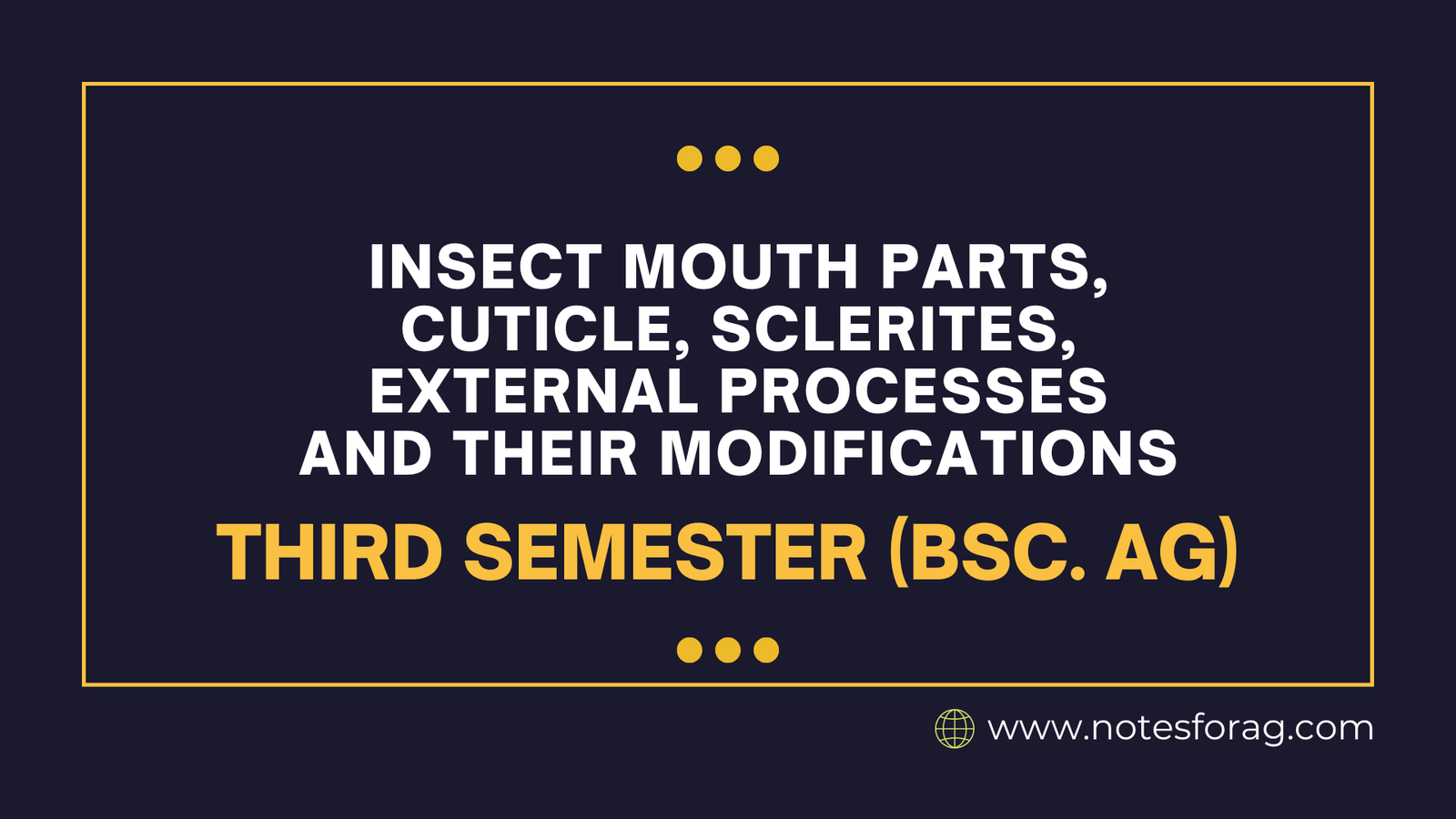Insect mouthparts are adapted to their eating behaviors, such as chewing (grasshoppers), piercing-sucking (mosquitoes), siphoning (butterflies), and sponging (houseflies). Their exoskeleton, also known as the cuticle, is a chitin-based protective coat composed of the epicuticle, exocuticle, and endocuticle, which harden through sclerotization. The cuticle creates sclerites, which are hard plates that offer structural support and flexibility. Insects also have a variety of exterior processes, such as antennae for sensory input, legs for movement or eating, wings for flight, and ovipositors for egg-laying, which are typically significantly changed depending on their ecological role.
Table of Contents
Introduction to Insect Mouthparts
Insects, a highly diversified and versatile group of arthropods, have a vast range of mouthparts that have evolved to fit their feeding habits and ecological niches. Insect mouthparts are classified primarily by their shape and function, allowing for the identification of three essential types: chewing, piercing-sucking, and siphoning. Each variety is tailored to unique nutritional requirements and plays an important function in the insect’s survival.

Chewing insect mouthparts are most commonly found in insects like beetles and grasshoppers, which have strong mandibles for crushing and grinding plant materials or other organic substances. These adaptations enable them to effectively utilize a wide range of food sources, making them critical components of many ecosystems. Piercing-sucking mouthparts, found in mosquitoes and aphids, are specialized features that allow insects to drain fluids from their hosts or plant tissues. This feeding strategy frequently results in intricate relationships with other creatures, such as parasitic interactions between some aphids and their host plants.
Insect mouthparts vary widely depending on their feeding habits and can be categorized into several major types:
1. Chewing (Mandibular) Type:
- Primitive insects include grasshoppers, beetles, and ants.
- Includes:
- Labrum: Upper lip.
- Mandibles: Strong jaws are ideal for cutting and crushing food.
- Maxillae: Food manipulation is achieved using paired structures.
- Labium: Lower lip.
- Hypopharynx: A tongue-like structure for tasting and manipulating food.
2. Piercing-Sucking Type:
- Found in mosquitos, bedbugs, and aphids.
- Includes lengthy, needle-like structures for piercing and sucking fluids like blood or plant sap.
3. Siphoning Type:
- Seen in butterflies and moths.
- The proboscis is a long coiled tube that extracts nectar from flowers.
4. Sponging Type:
- Discovered in houseflies.
- The labium creates a sponge-like structure that absorbs liquid food.
5. Cut-Sucking Type:
- Found in insects such as horseflies.
- Sharp mouthparts for cutting tissue are included, as are sucking fluid structures.
Insect Cuticle
The insect cuticle is an outer layer that protects the insect and provides structural support. It comprises of three major layers:
- Epicuticle: The outermost waxy layer that inhibits water loss.
- Exocuticle: The intermediate layer is hardened and gives strength.
- Endocuticle: The innermost, most flexible layer that creates elasticity.
The cuticle is composed of chitin (a carbohydrate) and proteins, which are commonly stiffened by a process known as sclerotization.
Sclerites
Sclerites are rigid plates or parts of an insect’s exoskeleton generated by the cuticle. These are classified into three types according to their position:
- Tergites: Dorsal (top) sclerites.
- Sternites: Ventral (bottom) sclerites.
- Pleurites: Lateral sclerites.
Sclerites give rigidity and protection, with flexible points (sutures) that allow movement.
External Processes and Their Modifications
Insects have a variety of exterior mechanisms that have evolved and adapted to their specific lifestyle and ecological niche. Some frequent processes are:
1. Antennae:
- Sensory organs responsible for smell, touch, and occasionally hearing.
- Modified in different species, such as feather-like in moths and clubbed in butterflies.
2. Legs:
- Frequently adjusted based on the insect’s lifestyle:
- Raptorial legs (mantises) used to grip prey.
- For digging, mole crickets use their fossorial legs.
- Saltatorial legs (grasshoppers) used for jumping.
- Natatorial legs are used by water beetles to swim.
3. Wings:
- Vary significantly amongst insect species.
- Elytra: Beetles have hardened forewings to protect their hindwings.
- Tegmina: Leathery forewings of grasshoppers and cockroaches.
- Haltere: Flies have modified hindwings that help them balance while flying.
4. Ovipositors:
- This structure can be seen in female insects and is utilized to lay eggs.
- Certain species have evolved into stingers (bees and wasps) or drills (cicadas).
Each of these components is critical to the insect mouthparts to interact with its surroundings, acquire food, reproduce, and survive. Insect mouthparts are well-adapted to their feeding habits and can be divided into numerous categories. Chewing mouthparts (found in beetles and grasshoppers) are employed to chop and grind solid food. Piercing-sucking mouthparts (e.g., in mosquitos) are used to pierce tissue and sucking fluids. Siphoning mouthparts (e.g., in butterflies) use a coiled proboscis to draw nectar. Sponging mouthparts (e.g., in houseflies) are sponge-like structures that absorb liquids, whereas cutting-sucking mouthparts (e.g., in horseflies) allow the insect to cut tissue and feed on fluids.
Frequently Asked Questions
What are sclerites, and why are they important?
Sclerites are tough plates or parts of the insect exoskeleton, such as tergites, sternites, and pleurites. They offer rigidity and protection while maintaining flexibility at articulated joints.
What is the function of the insect cuticle?
The cuticle serves as an exterior protective layer, giving structural support while preventing water loss. It is made up of the epicuticle, exocuticle, and endocuticle.
Related Articles

